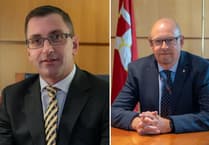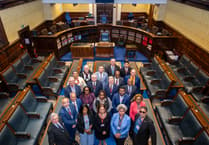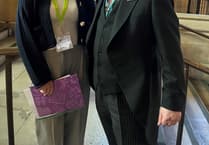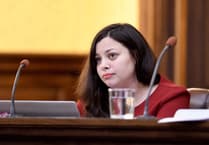The Bishop has launched a review of the Church of England’s historical links to the slave trade.
He has asked the clergy to carry out an audit of all buildings, churchyards, monuments and tombstones across the island to check for any ’memorialisation’ of individuals who were a part of the slave trade.
Bishop Peter Eagles is not minded at the moment to remove any memorials - but says this is not out of the question.
He said movements like Black Lives Matter that promote the cause of justice and anti-exploitation have posed serious ethical and cultural questions.
This has ’brought into focus the question of monuments’, he said.
Bishop Peter said: ’In the light of concerns raised recently, we need to have a look at how we have memorialised our history.
’It strikes me that we have a moral responsibilty to do that.’
The Bishop insisted that he had not been lobbied by anyone but had simply asked the clergy on June 22 to carry out an audit. English dioceses have done the same, he said.
’Memorials in a particular period may not necessarily have the same resonance today,’ he said.
’A prominent memorial in a church in some cases is a mark of the esteem in which the person was held in their community and beyond.
’In others, it will reflect a donation given to the church at the time by an individual or family or a combination of the two.
’We may not necessarily feel the same way about things as they were felt then. We have to have that discussion.’
He said removing memorials struck him as an ’odd way’ of dealing with the issue. ’It’s not out of the question but at the moment I don’t have the intention to do that,’ he said.
And he cited the destruction of statues and artefacts during the Reformation which he said had ’not served us well’.
Bishop Peter said it was a question of how you tell the cultural history and whether it could be ’better articulated’ and further explanation provided.
’History can’t be viewed only from the perspective of today. Neither does it stand absolute and unequivocal,’ he said.
’I’m not convinced you can take things away. Most stories do not necessarily tell you the whole truth. We do have a duty to continue to question whether we are telling the story as fully as we can.
’You don’t do that by taking things away.’
Diocese spokesman John Coldwell said: ’Each diocese within the Church of England has been invited centrally to look at memorials in burial grounds and internally in churches and cathedrals.
’Presently, the process of checking any of these memorials and any links is underway but not yet completed.
’We await the outcome of the audit ourselves and it would be wrong to speculate before this result is known.’
A Black Lives Matter protest in Bristol last month saw the statue of 17th century slave trader Edward Colsten toppled and pushed into the harbour.
Activists have drawn up a list of some 60 other statues and plaques linked to Britain’s colonial past that they want taken down.
The Isle of Man was involved in many aspects of the slave trade.
Island merchants dealt in ’Guinea goods’, exchanged for slaves on the West African coast, and financial partnerships in voyages.
Merchant John Taubman, an advocate and MHK, invested in the brigantine Prince Vauba, which called in to Douglas for part of her cargo after setting sail from Liverpool in December 1760.
The ship then headed to Angola to purchase slaves and delivered 180 of them to Barbados and St Kitts before returning to Liverpool in April 1762.
The last slaving ship to sail from Liverpool on the triangular voyage to Africa, the Americas and back to Britain was the Kitty’s Amelia under the command of Manx captain Hugh Crow.
Legislation abolishing the trade in slaves by British vessels came into force in 1807.




